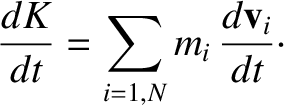Power
It follows from Equation (1.193) that
 |
(1.199) |
Making use of Equation (1.181), we obtain
However, according to Equations (1.180) and (1.182),
Hence, we obtain
The right-hand side of the previous equation specified the work per unit time done on the system by the external
torque.













